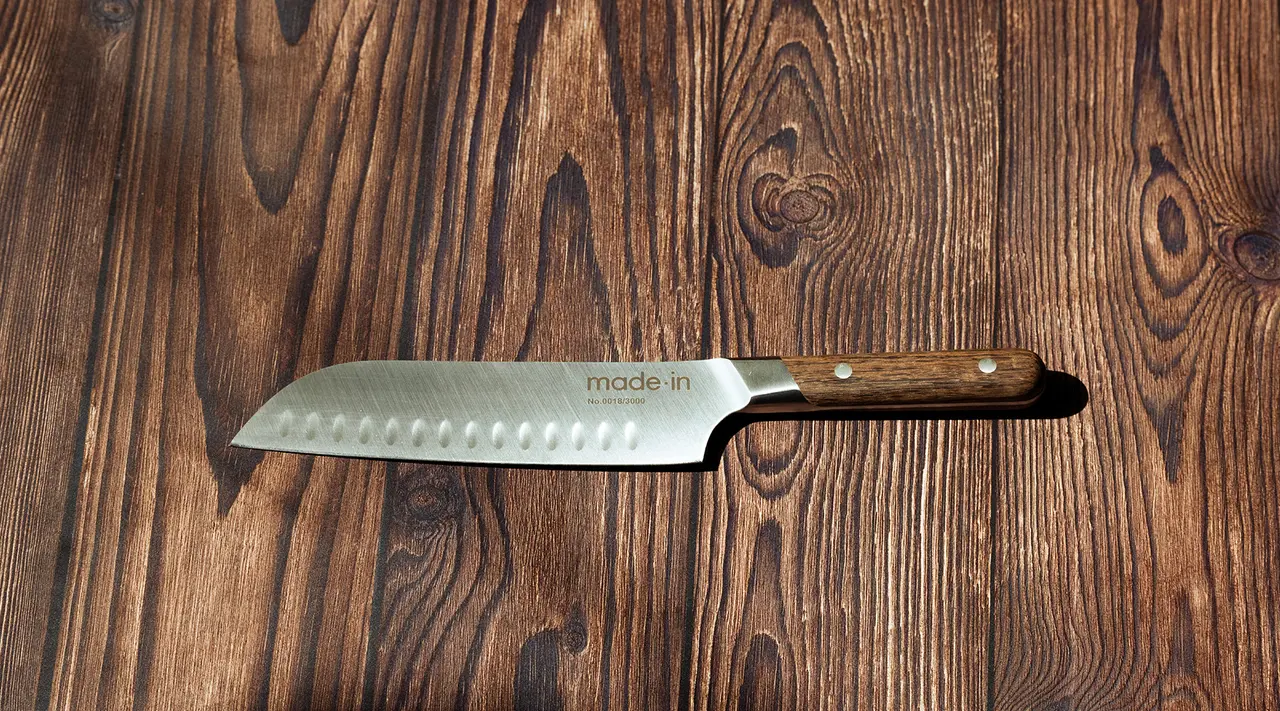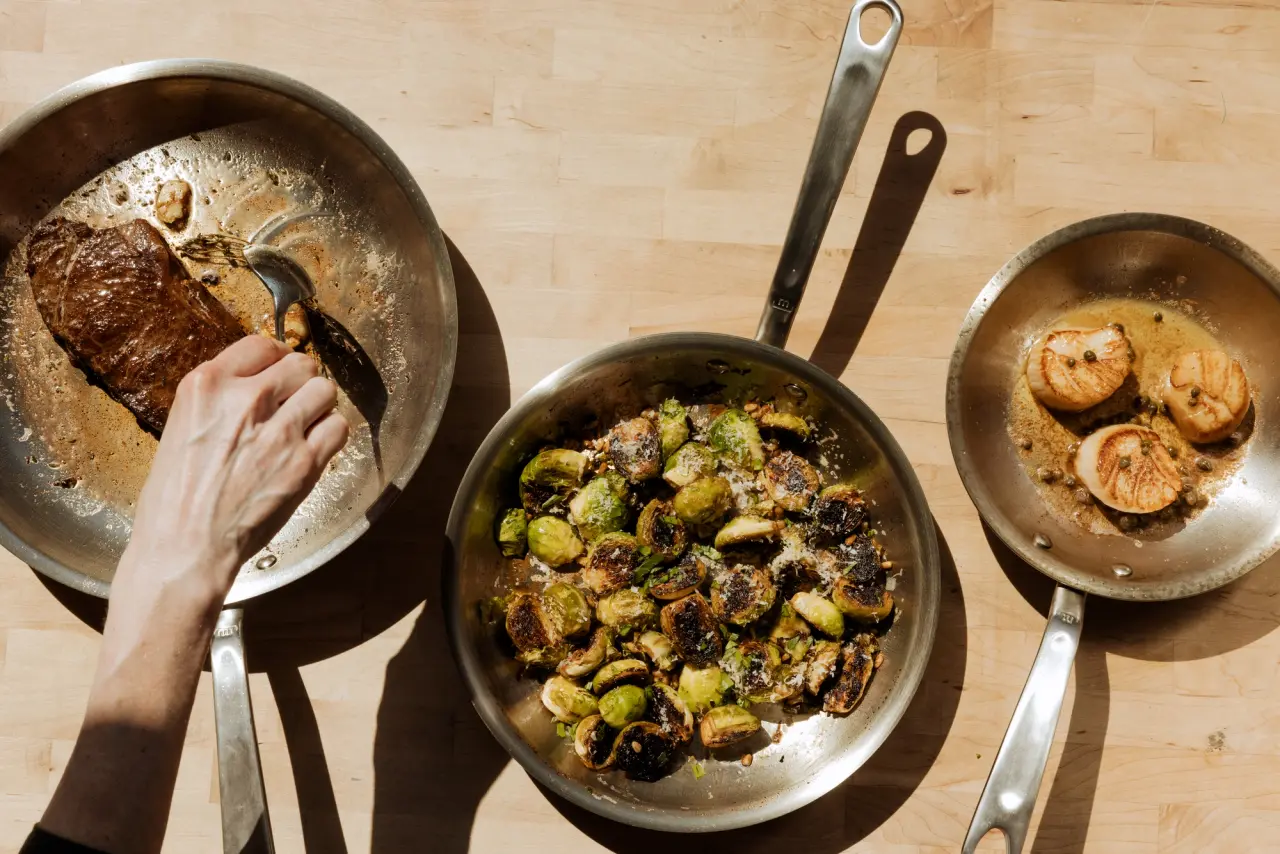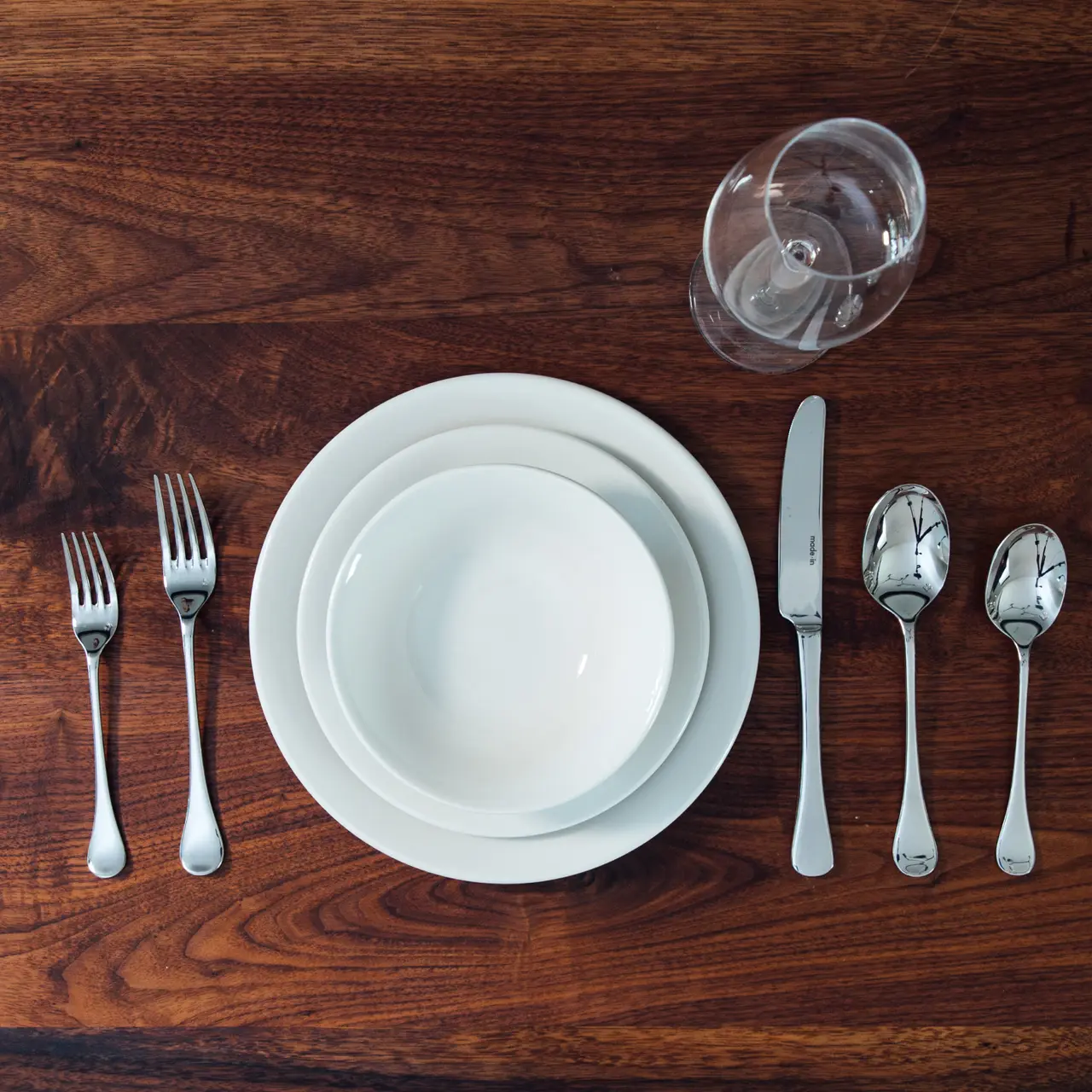Santoku roughly translates to “three virtues.” What these three virtues are, well, that’s up for debate. Some say it refers to the uses—slicing, dicing, and mincing—others assert it has to do with the things you can cut—fish, meat, and vegetables.
Like all of our Knives, this one is full tang and fully forged, meaning it is crafted from a single rod of nitrogen treated stainless steel, all the way from the blade to the hilt. It is balanced, durable, and sharp as can be. Offered in a limited quantity, each Limited Edition Santoku features a serialized engraved number.
Ovangkol Handle
Made from the same wood used to make guitars, violins, and cabinetry, we chose Ovangkol Wood for the handle of our Santoku because of its beauty and durability. It’s FSC certified as well, meaning that the wood is harvested from responsibly managed forests. Because Ovangkol is typically used for high-priced daily-use items, we thought that adding it to a knife you’ll use every day would be the perfect pairing.
Fluted Blade
If you look closely, you can see little oval dimples running through the length of the Santoku’s blade. Each of the 28 individual dimples, or flutes, on this 7-inch blade helps make this knife ideal for prep work. They inhibit bits of vegetables from sliding up the blade of the knife, and instead keep them where they’re supposed to be—on your board, in a neat little pile, ready to be sautéed.
Flat Shape
Like a Nakiri, our Santoku Knife features a nearly flat blade, unlike the curved blade of our Chef Knife. This makes it the perfect shape for slicing cleanly through vegetables. Because of this flat edge, it excels at crafting even juliennes and fine slices. However, unlike a Nakiri, our Santoku features a pointed tip, so that you can pierce through tough skins or raw meat with minimal effort.





















